
May 13, 2012
Is the above the right first question to ask? Should we start there before speculating further in so many avenues? Has hominology truly realized the fluid nature of what we are dealing with, as has been explored in a parallel field, ufology?
Back in 2006, I discussed “The Evolution of Cryptozoology Drawings.” I found that initial eyewitnesses’ attempts to capture what they saw did change through the artwork created by later illustrators, some with their own agendas, and sometimes through the retellings of the witnesses. I spoke on this issue at the original Texas Bigfoot group’s early 2005 conference and at the Bates College’s cryptozoology symposium held in October 2005 in Lewiston, Maine.
It may be appropriate now to look at another issue in a related realm. First, two questions: What if eyewitnesses who are describing Bigfoot are not actually seeing what they think they are? Do we know what happens in a Sasquatch encounter is correctly be referenced for us via the human eyewitnesses?

The example of the Pascagoula Critters, which, by definition, are part of ufology might not seem like a good place to start talking about the eyewitness testimony of Bigfoot witnesses. But there are lessons to be learned here, and perhaps it is time for Sasquatch investigators to look for some comparable data to inform our cryptid pursuits. Physical evidence is important, but then so too is the tricky world of firsthand encounter (eyewitness) sighting data, as well.
Regarding the Pascagoula case, University of California professor James Harder investigated the story, as did Dr. J. Allen Hynek, who represented the U.S. Air Force. Harder and Hynek worked together on the case. First they interviewed the two fishermen eyewitnesses, Calvin Parker, 19, and Charles Hickson, 42, together. Harder tried to do regressive hypnosis on Hickson, but the alleged abductee was so frightened that the hypnosis was stopped. Both of the witnesses, however, took polygraph tests, and both passed without a problem. Harder and Hynek both believed that the two tormented men were telling the truth.
What occurred with the depiction of the Pascagoula entities leads to similar insights as what I described in “The Evolution of Cryptozoology Drawings” for the changing view of Momo (the Missouri Monster). For the Pascagoula experience, from the supposedly “based on the eyewitness” drawings to their morphing into popular cultural comic books, shiny figurines, and one-of-a-kind art, the evolution of these “critters” is somewhat predictable.
From the Air Force’s investigations’ images…
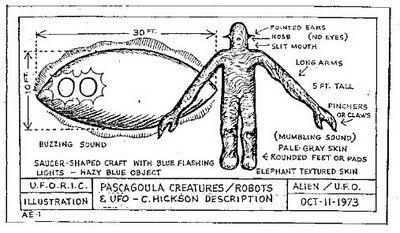
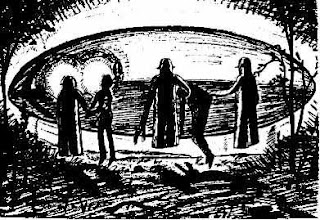
…to the following comic book graphic of the event which certainly does demonstrate that some leaps are big ones.
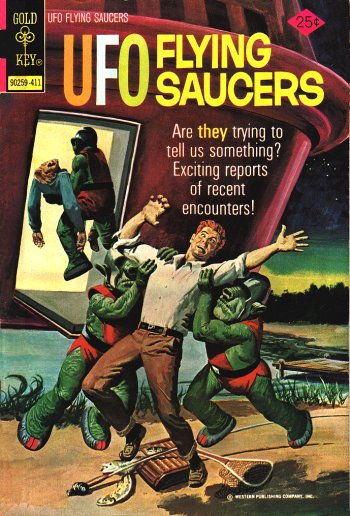
What were eyewitnesses really seeing? Will we ever know?
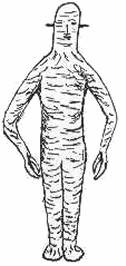
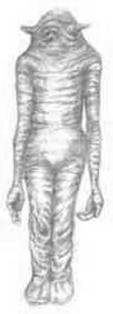
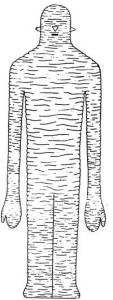
What did the eyewitnesses experience? Various artists have similar but different views.

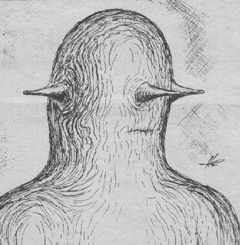
Harry Trumbore’s drawing is generally regarded as bringing together many of the elements of the eyewitness descriptions and other artists’ interpretations. Trumbore’s image below was first carried in Patrick Huyghe’s 1996 edition of The Field Guide to Extraterrestrials.

Then there are the 3-D figurines…
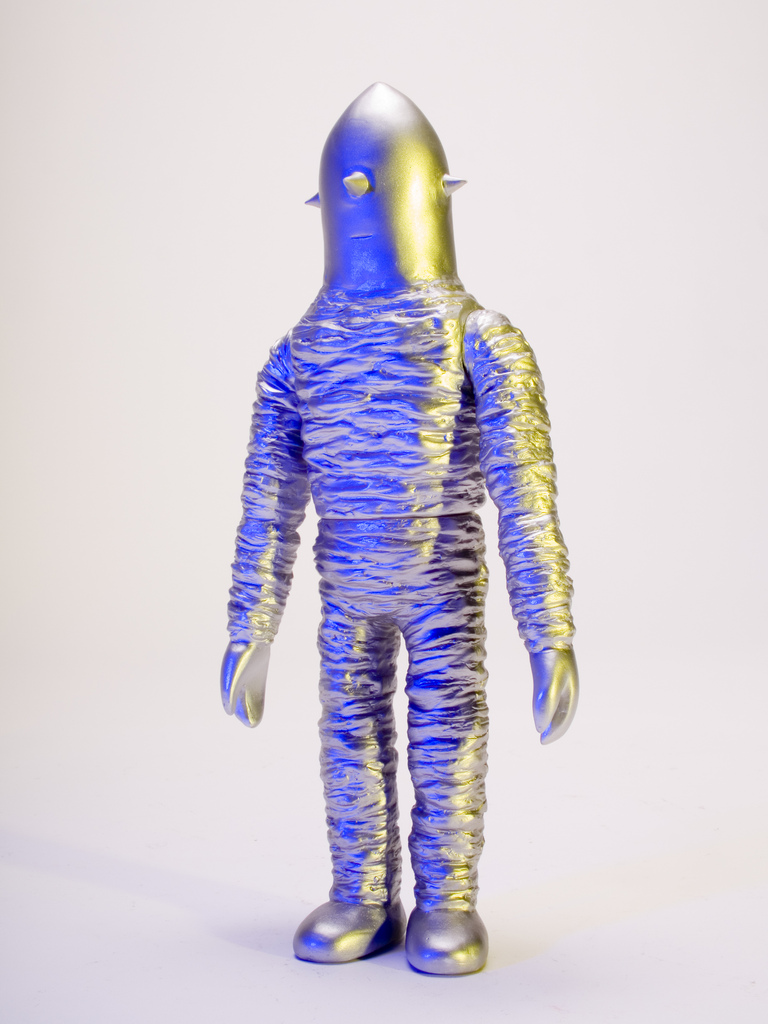

But something else is going on too.
In Patrick Huyghe’s The Field Guide to Extraterrestrials there is an investigative incident that needs to be reviewed and reflected upon. Richard J. Boylan, Ph. D. is a behavioral scientist, anthropologist, and certified clinical hypnotherapist. He has been involved in hypnotizing ufo abductees. What he found is worth pondering.
On page 131, Huyghe writes of how an eyewitness under hypnosis told “Richard Boylan that she had encountered a ‘spaceman.’ When he invited her to look closely at the face of the ‘human’ spaceman, she replied, ‘Oh my! It’s not human after all. It’s one of those Grays.’ But when he suggested that she look closely at the face of the Gray, she realized that the Gray was actually a reptoid.”

Wetzel’s “It” by Bill Rebsamen from Mysterious America (page 273).
Now, I am not here to talk about reptilians or aliens or ufonauts. My concern is with eyewitnesses. What are they seeing, and when they see Bigfoot, are they so scared or in shock or in trance that they are telling us what we want to hear? Or what culturally they “think” a Bigfoot looks like?
What would occur if Sasquatch encounters were examined more deeply by hypnotizing the eyewitnesses?
What happened to the use of hypnosis in earlier Bigfoot investigations?
Should we even broach this critical forensic difference between ufological and cryptozoological eyewitness stories? Within murder investigations, criminal reconstructions, and, yes, ufological and abduction research, the frequent use of the technique of hypnosis appears to have become divorced from the examination of Bigfoot eyewitnesses.
Why?
We aren’t sure why this occurred.
Indeed, considering that even in homicidal and violent crime cases where court admissibility of evidence obtained through this method is not regarded too highly, it is in the data gathering phrase of the investigation where there is great reliance on hypnosis to collect the details of the cases.
http://www.youtube.com/watch?v=mvx5fgd5F04
Bigfoot researchers, in the 1970s, experimented with hypnosis, but not in any well-crafted fashion.
Looking back at the first blush of the post-Patterson-Gimlin years of Bigfoot investigations, attempts at hypnosis seem to have been utilized. Was it successful? Was it incorrectly used? Did the gathering of details of the sightings fall short?
Are investigators today using hypnosis secretly, without most of the general public realizing this is occurring?
Is it time to reopen the debate about using hypnosis to mine deeper details about the human-Bigfoot encounters?
About Loren Coleman
Loren Coleman is one of the world’s leading cryptozoologists, some say “the” leading living cryptozoologist. Certainly, he is acknowledged as the current living American researcher and writer who has most popularized cryptozoology in the late 20th and early 21st centuries.
Starting his fieldwork and investigations in 1960, after traveling and trekking extensively in pursuit of cryptozoological mysteries, Coleman began writing to share his experiences in 1969. An honorary member of Ivan T. Sanderson’s Society for the Investigation of the Unexplained in the 1970s, Coleman has been bestowed with similar honorary memberships of the North Idaho College Cryptozoology Club in 1983, and in subsequent years, that of the British Columbia Scientific Cryptozoology Club, CryptoSafari International, and other international organizations. He was also a Life Member and Benefactor of the International Society of Cryptozoology (now-defunct).
Loren Coleman’s daily blog, as a member of the Cryptomundo Team, served as an ongoing avenue of communication for the ever-growing body of cryptozoo news from 2005 through 2013. He returned as an infrequent contributor beginning Halloween week of 2015.
Coleman is the founder in 2003, and current director of the International Cryptozoology Museum in Portland, Maine.
Filed under Bigfoot, Cryptomundo Exclusive, CryptoZoo News, Eyewitness Accounts, Forensic Science, Forteana, Sasquatch